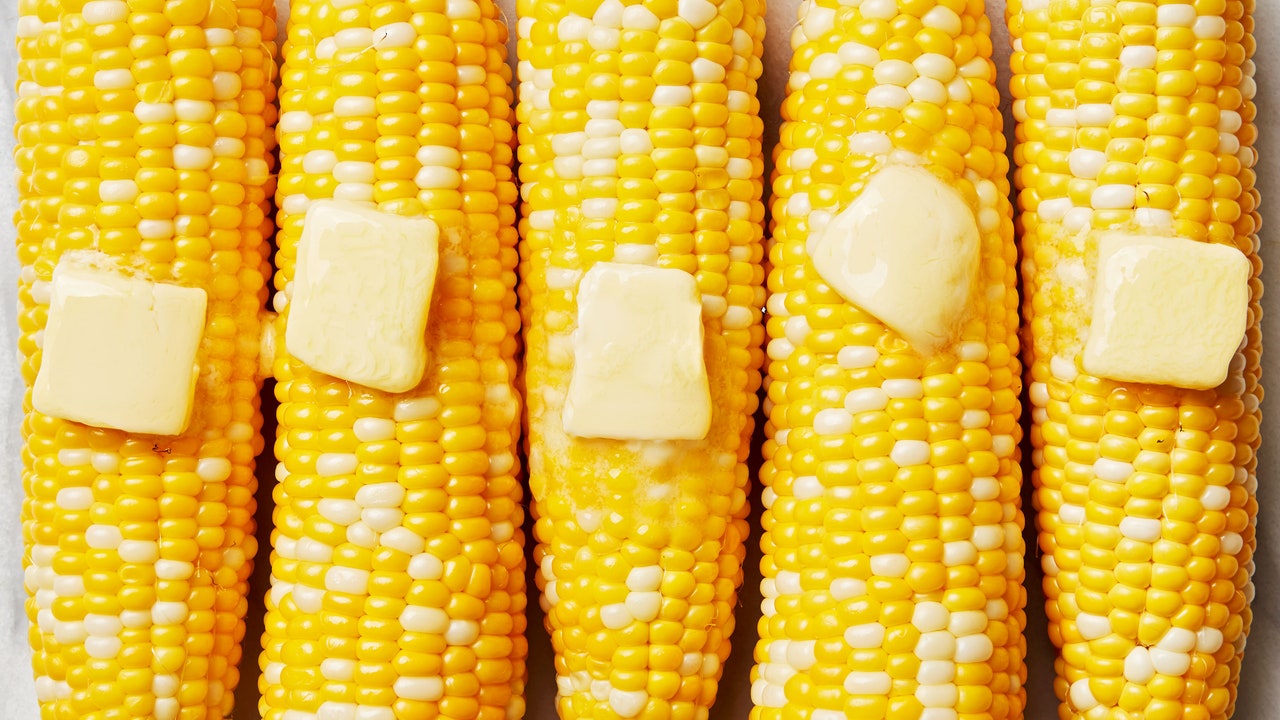The irony is not lost on me that when I was asked to write an article on how to store corn, I realized that I didn’t know much about it. Yes, me—the person with “corn” in their name.
As a food anthropologist, I do know a lot about corn’s cultural importance throughout history. Yet, as a chef, my knowledge in this area was severely lacking. “Just throw it in the fridge,” I thought, “and make sure it doesn’t smell bad or have any mold before you cook it.”
What I found out, however, is that it’s not so simple. Corn season may be creeping up on us once again, but I’ve been able to find corn in the husk in my local supermarket chains for about a month now. Plus, I can almost always find those shrink-wrapped styrofoam trays of shucked and trimmed corn. Should fresh, local corn need to be treated any differently from corn grown thousands of miles away? And the true challenge: How do you know if the corn is actually fresh and sweet under that beautiful leafy husk without shucking it right there in the store?
What is corn, and where did it come from?
To understand how to choose the right corn and the best way to store it, it’s important to know a bit about corn. Also known as maize, corn is one of the most significant cereals in human history. The plant originated in Central and South America, and it was of the utmost importance in both cuisine and religion for the Aztec, Inca, Maya, and many Native American cultures. It still holds great symbolic meaning today in the US: It’s a sign of summer, grilling, and, of course, the Corn Belt states. Even though 99 percent of the corn grown in the US is field corn—i.e., corn meant for cattle feed, ethanol, and processed corn products including cornmeal, tortillas and cereal, such as corn flakes—the remaining 1 percent of sweet corn is still a bountiful representative of American cuisine.
The anatomy of an ear of corn gives us insight into how to purchase and store corn. The kernels of an ear of corn are actually tiny, immature fruits, mostly composed of the endosperm, which supplies the nutrients that nourish them. It’s the endosperm that makes sweet corn sweet, as it’s made up of storage proteins and starch, which provide the flavor we know and love. The silks that come out of the top of the ear of corn are what allow each undeveloped seed to become pollinated and mature. These seeds are wrapped in leaves (what we call the husk) and together, comprise an entire branch of the plant, according to Elizabeth Buck, a vegetable specialist at the Cornell Cooperative Extension.
How do you choose the best corn?
Like any plant, corn needs water to thrive, and once it is harvested, its sugars may begin to convert to starches. Once sweet corn is harvested, Buck says, it “gets cut off from its water supply.” At that point, water loss and temperature become the two main factors in terms of freshness. Buck notes that “corn needs to be kept in cool temperature and high humidity, so [it] needs to be kept cold and in small containers” to minimize degradation.
